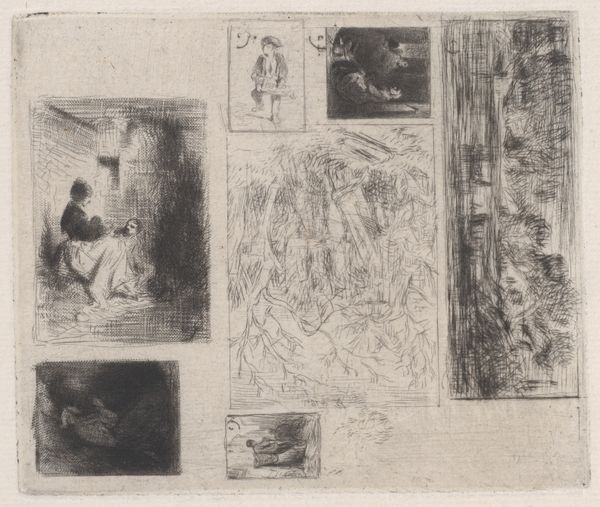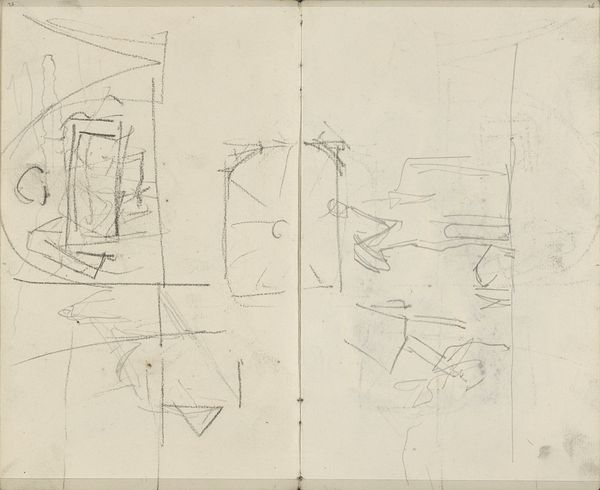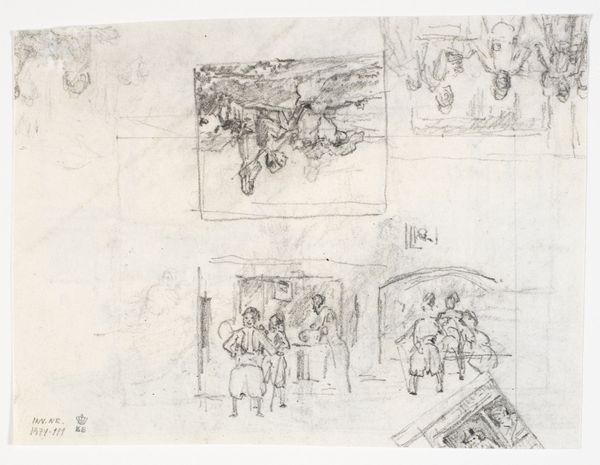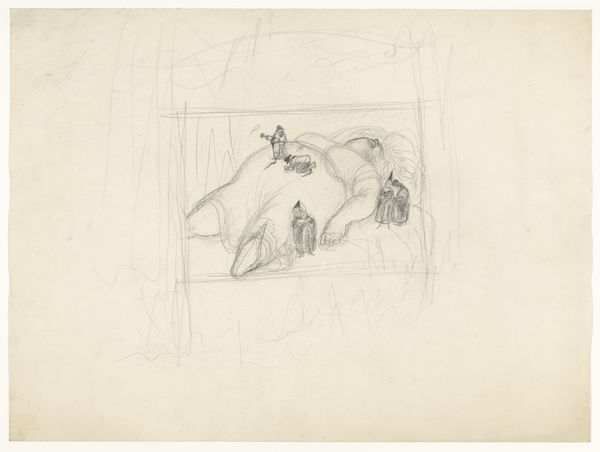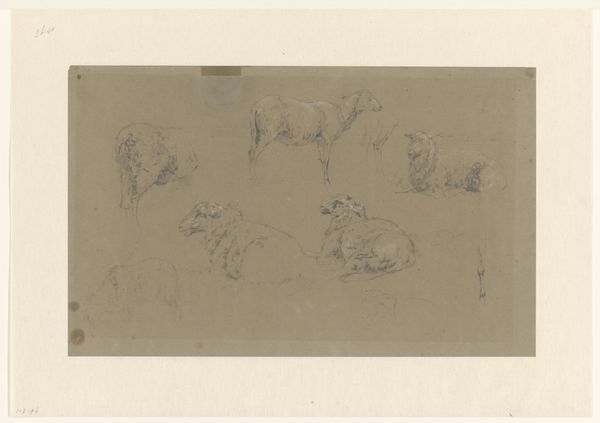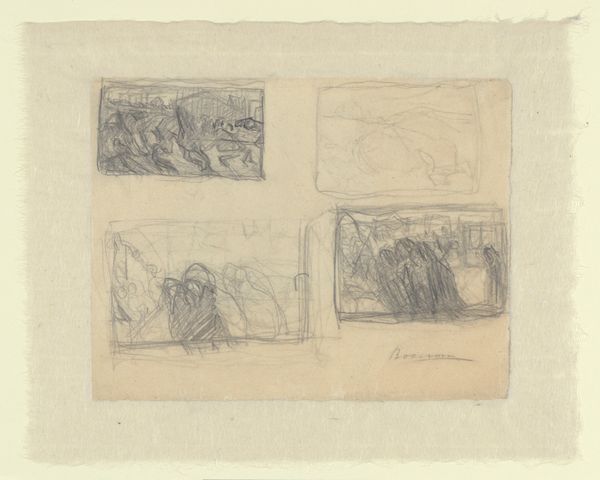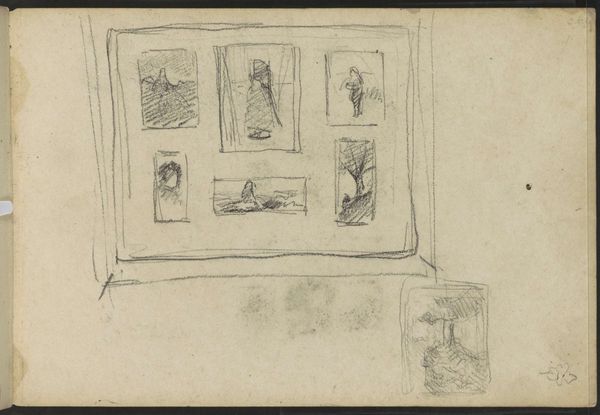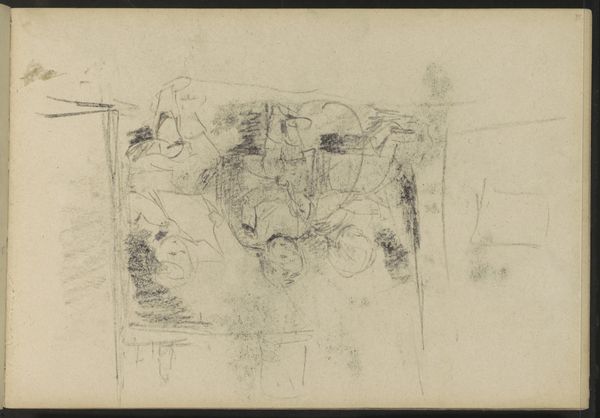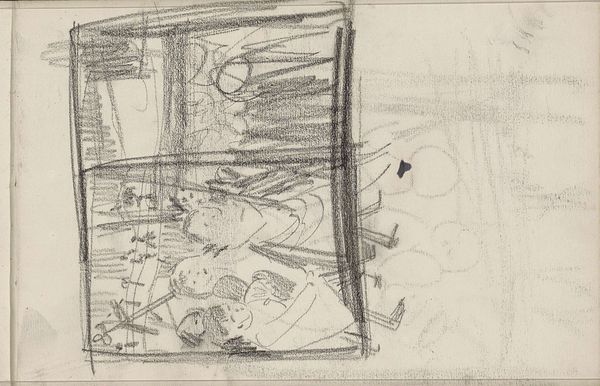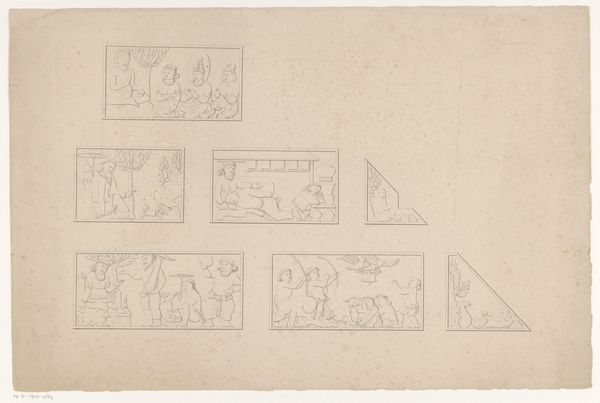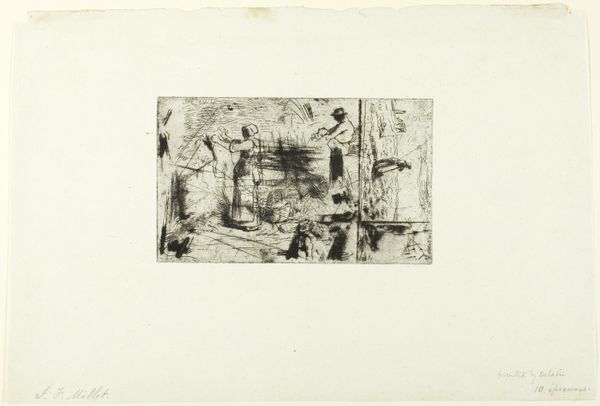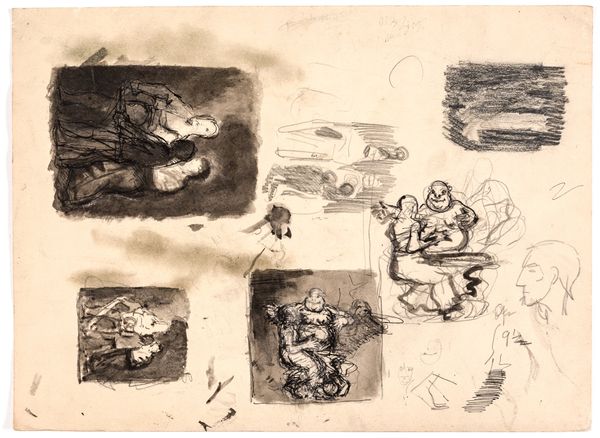
drawing, paper, pencil
#
portrait
#
drawing
#
toned paper
#
light pencil work
#
quirky sketch
#
impressionism
#
pencil sketch
#
paper
#
personal sketchbook
#
ink drawing experimentation
#
pen-ink sketch
#
pencil
#
sketchbook drawing
#
watercolour illustration
#
genre-painting
#
sketchbook art
Dimensions: height 294 mm, width 442 mm
Copyright: Rijks Museum: Open Domain
Editor: This is "Compositie studies van een pianoconcert," or "Composition Studies of a Piano Concert," created sometime between 1865 and 1913. It's a pencil and ink drawing on paper. Looking at these fragmented sketches, it feels like we’re glimpsing into the artist's private creative process. What catches your eye in this work? Curator: Well, as a historian, I’m immediately drawn to the glimpse it offers into artistic and musical circles of the late 19th century. Think of the concert halls, salons, and even domestic spaces where this kind of performance might have taken place. It's not just about the musical notes; it's about the social rituals, the power dynamics between performer and audience, and how the setting itself shapes the experience. Editor: So, you see this as a record of a specific social moment? Curator: Precisely! The Rijksmuseum tells us it's by Bramine Hubrecht. What role did women artists play in documenting these events? Were they welcomed in the public spaces? How does a woman's perspective alter what details are recorded? The sketch offers quick impressionistic depictions but implies more to unpack. Editor: That’s interesting. I was focusing more on the artistic process and the quickness of the hand in the multiple sketches. I missed those social cues. Curator: Think about the role of sketching at the time. Was it solely preparatory work or considered its own form of artistic expression? What institutions, like art schools or artist guilds, might have influenced Hubrecht's style and her choice of subject matter? Did she show at the Haagse Kunstkring for example? Editor: I never considered it as potentially documenting female artists. Now that you mention it, the way these studies frame both the piano player and the observers suggests an inclusive cultural happening. Curator: Exactly. By examining this sketchbook page within its historical context, we move beyond simply appreciating the artistic skill to understanding its cultural significance and the intricate social fabric it reflects. Editor: I think it really challenges this notion of "art for art's sake" doesn't it? There’s so much more there than just aesthetic skill. Curator: Indeed! Now, I’m curious, after our discussion, how does it alter your impression of the drawing?
Comments
No comments
Be the first to comment and join the conversation on the ultimate creative platform.
